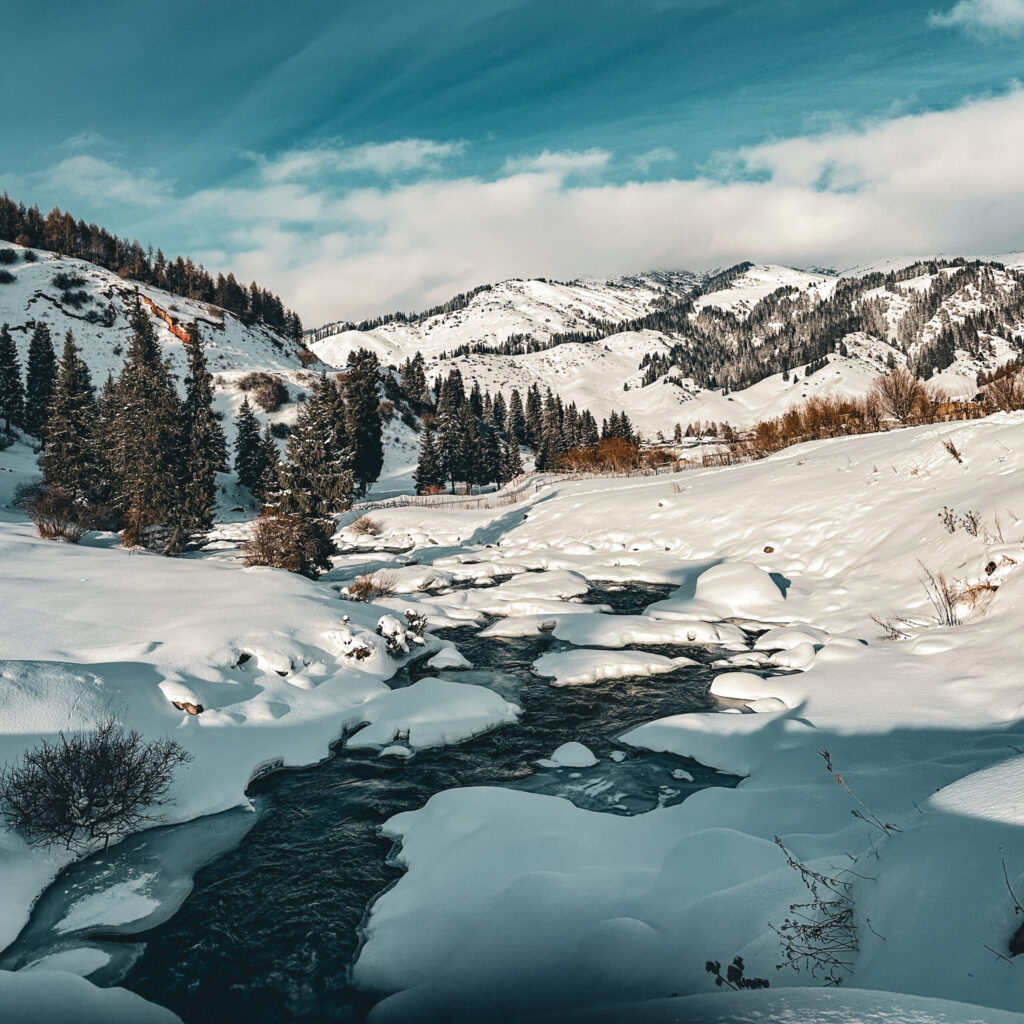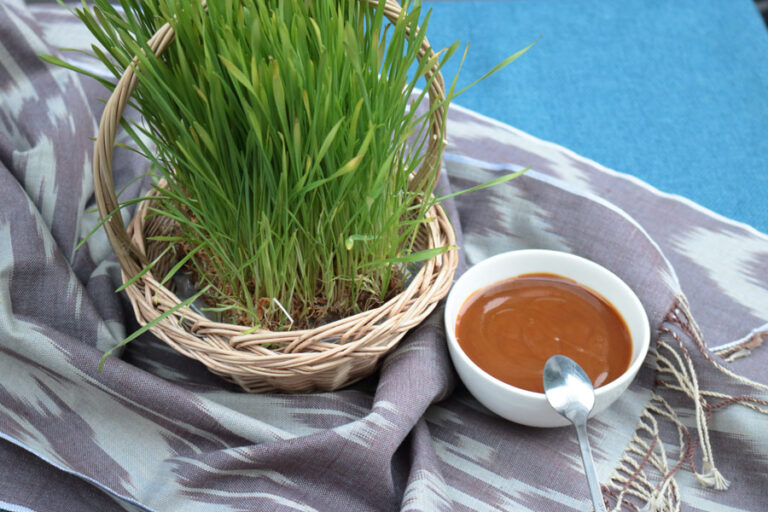According to locals, Jyrgalan Valley is a region blessed by God. And they make a compelling case. Seven nearby peaks surround the valley, offering beautiful views and weather that is perfect for year-round adventure activities. Cool breezes filter down from the glaciers in the warm summer months, allowing for world-class trekking, horseback riding, and mountain biking. And during the winter, those same mountains protect freeride skiers from harsh winter winds, leaving miles of fresh snow for the taking. You could not design a destination whose contours were more suited to adventure tourism.
But as beautiful as it is — the natural lakes, rivers, and waterfalls are among the most stunning in all of Kyrgyzstan — the community of 1,000 local residents have seen their share of hardship. The Jyrgalan Valley’s story is one of re-imagining and reinvention.
Located in the Issyk-Kul province just 60 kilometers from Karakol, Jyrgalan village was once a prosperous mining town. First founded in 1932, the Jyrgalan mine proved lucrative during the Soviet times and families built homes, enjoyed running water, and sent their children to high-quality local schools. After the fall of the Soviet Union, however, the bulk of the town’s economic activity collapsed. Locals lost their livelihoods, many mining jobs disappeared, and most homes no longer had running water and plumbing.
By the mid-1990s, many locals had lost hope that their town would ever recover from the seemingly never-ending series of setbacks. Locals described it as a place to escape. Even though locals loved the sense of community — and most assert that the area’s natural beauty is unparalleled anywhere else in the world — they saw no future. Those who couldn’t afford to move (their homes had virtually no resale value) believed their children would have few opportunities if they stayed in the Jyrgalan Valley.
In 2016, however, six local families banded together to form the Jyrgalan Destination Management Organization (DMO), which would operate as a nonprofit social enterprise dedicated to increasing the town’s ability to appeal to and host international independent travelers. Invigorated by the dream of a better future for themselves and their children, locals renovated their homes to better accommodate guests, fixed the water supply to once again tap into the fresh-water spring running through the outskirts of town, and underwent hospitality and guide training programs. They did this with the hope that tourists would find their small village as charming as they did.
With the support of the USAID Business Growth Initiative, the DMO gained traction during the summer 2017 trekking season and locals have regained their hope for a bright future — independent tourism grew exponentially in that very first season of the formal establishment of the DMO. For good reason, too. The Jyrgalan Valley sits 2,300 meters above sea level, making it an ideal base for outdoor adventures no matter the season. The valley boasts a unique microclimate thanks to the altitude coupled with the surrounding Ala-Too Terskey mountain range — it’s never too hot in summer, never too cold in winter. That means there are year-round activities, from summer trekking, horse trekking, and mountain biking, to amazing winter sports (like the best freeride skiing in Central Asia, snowmobiling, and more).
The Jyrgalan Valley is the story of a beautiful destination that simply needed care and attention to regain its lost splendor. This is a place where the community believed tourism could create positive change for the locals, while offering travelers from all over the world the opportunity to venture into pristine, unspoiled beauty.


